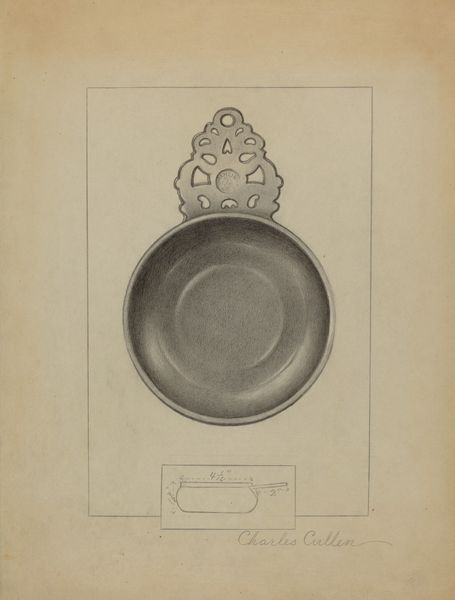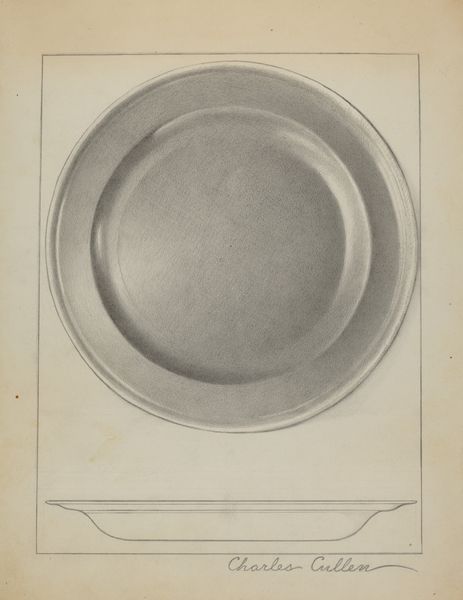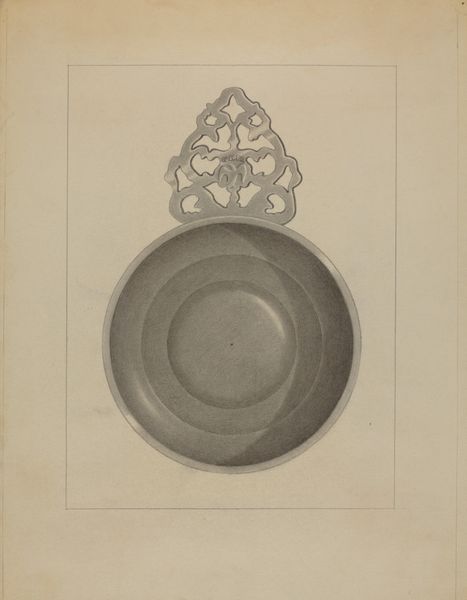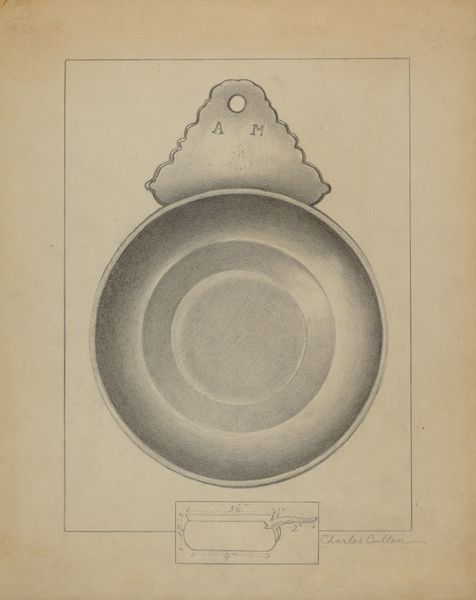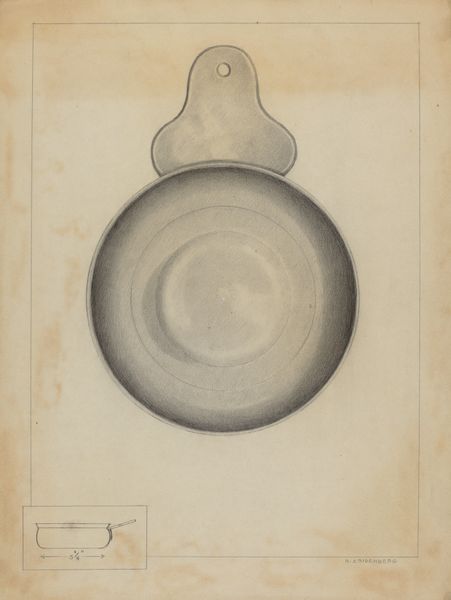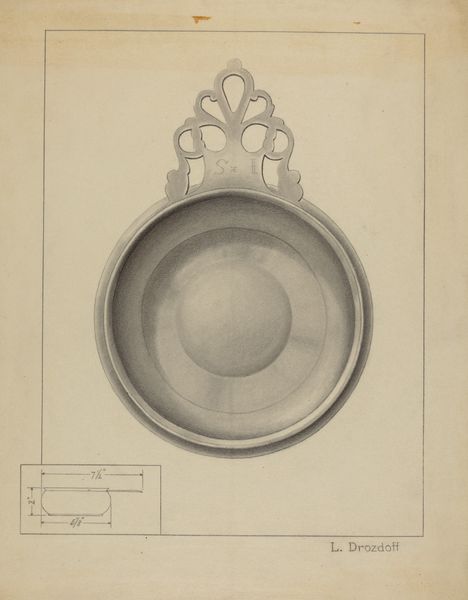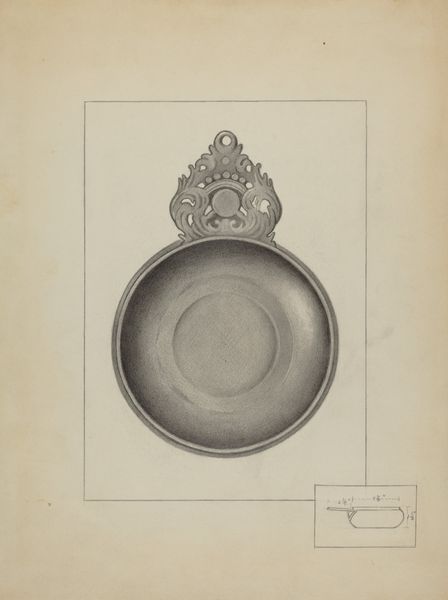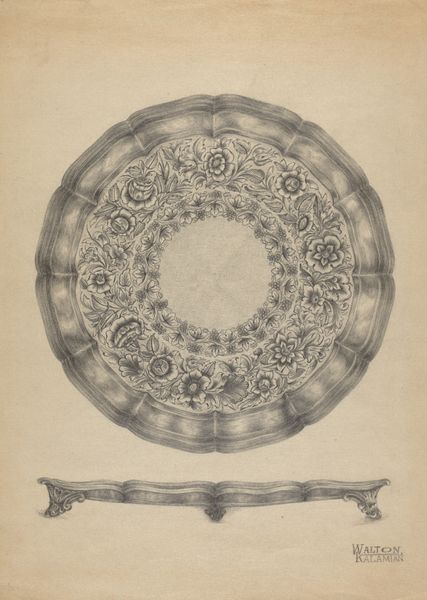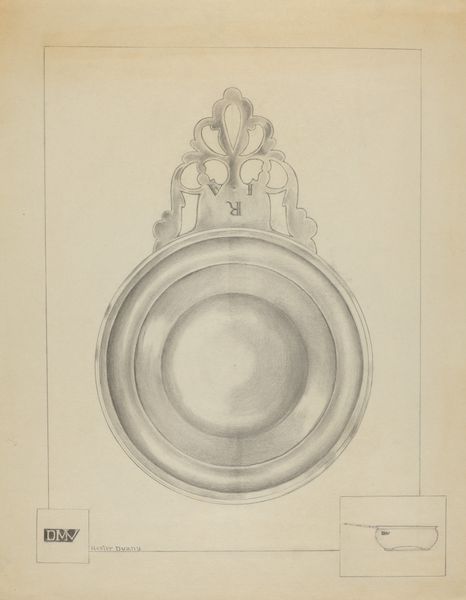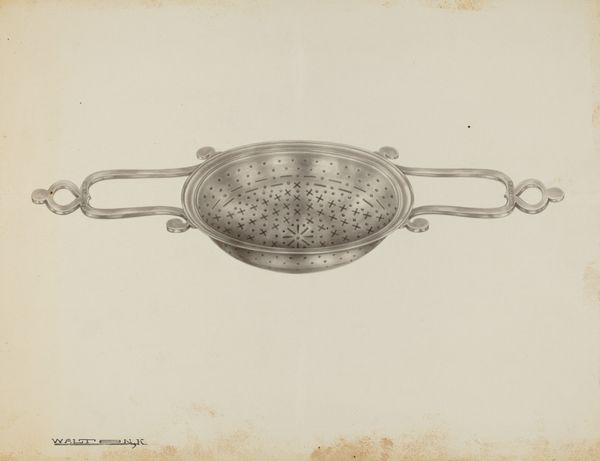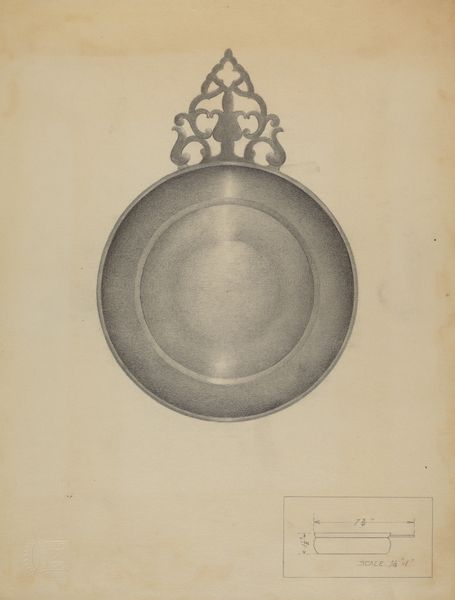
drawing, pencil
#
drawing
#
geometric
#
pencil
#
academic-art
Dimensions: overall: 30.2 x 23.1 cm (11 7/8 x 9 1/8 in.) Original IAD Object: 1 3/4" high; 5 1/4" in diameter
Copyright: National Gallery of Art: CC0 1.0
Editor: Here we have Charles Cullen’s “Pewter Porringer” from around 1936. It's a pencil drawing of a rather ornate bowl. It's so detailed, it almost feels like I could reach out and touch the cold metal. What draws your attention when you look at this drawing? Curator: I’m immediately struck by the act of depiction itself. We see the residue of labor; the artist mediating material culture. Cullen painstakingly recreates the texture and form of pewter using graphite, drawing attention to the process of artistic labor that often goes unseen. Notice the mechanical drawing alongside it. Is it a plan? How might it affect its value? Editor: I hadn't considered that! It is really interesting to see both the artistic representation and the more technical, almost industrial design elements side by side. It blurs the lines, doesn't it? Curator: Precisely. Cullen prompts us to examine hierarchies, not just within art forms, but also in society. Who uses a porringer, and who designs or manufactures it? It forces us to question those structures. What do you think? Is it craft or design? Fine art? Editor: I think it might be all of them at once. The fact that it’s meticulously drawn elevates the everyday, practical object into something more…contemplative. It also makes me think about mass production versus the individual artisan, and how value is assigned. Curator: Absolutely, it reveals the hand in the industrial age. Looking closer at its period, the Great Depression also emphasizes this consideration: labor, means, need and accessibility all influence art production, subject, and appreciation. Editor: I will never see just a drawing of a bowl again! This makes you think about the purpose of drawing itself - not just as art but a record, a plan, even a social commentary. Curator: Precisely. Material reality is, here, mediated, challenged, and re-presented through skilled labor, forcing questions about class, production, and consumption that were especially poignant at its time.
Comments
No comments
Be the first to comment and join the conversation on the ultimate creative platform.
